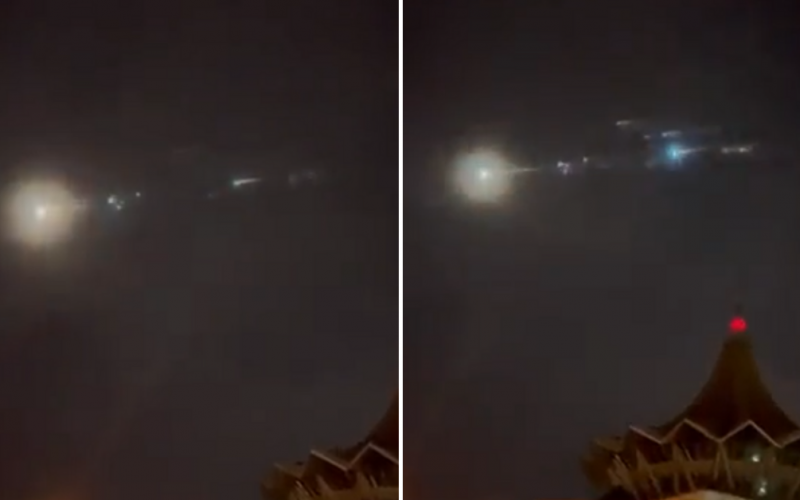In the words of the 1990s seminal sci-fi classic television series, The X-Files, do you believe? For decades since time immemorial, the potential for the vast universe that hangs above us to hold the possibility of intelligent, otherworldly life have sparked to a burning curiosity among humans regarding alien beings. And these speculations are only ever fueled by seemingly unexplained and bizarre phenomena witnessed amid inkwell clouds and the twinkle of stars.
Bright streaks witnessed in Sarawak night sky
And that would most definitely be the case in the Eastern Malaysian state of Sarawak yesterday (July 31st 2022), after bright streaks of light were suddenly seen careening across dusky night skies at 12.45am. Easily singled out by their fiery tails, video clips of the incident were quick to spread widely across social media, with locals in Kuching, Sibu, and Bintulu all witnessing it. Many have speculated that it was either caused by comets or meteors, given their appearance.
meteor spotted in kuching! #jalanbako 31/7/2022 pic.twitter.com/ff8b2zI2sw
— Nazri sulaiman (@nazriacai) July 30, 2022
However, neither hypothesis proved to be true as according to local newspaper The Star, the streaks were not so much astronomical in origin as they are human, as they were in fact created by space trash that lit up into glaring balls of flame from the heat and friction generated during their re-entry into the Earth’s atmosphere.
Turns out to be debris from China rocket launch
More specifically, they are believed to be pieces of space debris left by the Chinese Long March 5B rocket’s 22.5 tonne core stage, which returned to Earth over the Indian Ocean yesterday. This was later confirmed by the United States Space Command through their official Tweet on the matter.
#USSPACECOM can confirm the People’s Republic of China (PRC) Long March 5B (CZ-5B) re-entered over the Indian Ocean at approx 10:45 am MDT on 7/30. We refer you to the #PRC for further details on the reentry’s technical aspects such as potential debris dispersal+ impact location.
— U.S. Space Command (@US_SpaceCom) July 30, 2022
The Malaysian Space Agency (MYSA) had also corroborated NASA’s findings, and said that they too detected the debris catching fire upon re-entry into the Earth’s atmosphere before it was hurled right into the Sulu Sea. According to The Straits Times, the China Manned Space Agency, which is responsible for the craft, later revealed the coordinates of the rocket’s site of impact located 57km off the Eastern Coast of the Pahlawan Islands in the Philippines.

For those not in-the-know, the Long March 5B rocket was tasked to deliver a laboratory module to the still under-construction Tiangong space station, which is owned and operated by the Chinese government, reports the BBC.
Tap here to give us a ‘Like’ on Facebook and stay up-to-date on the latest news!








